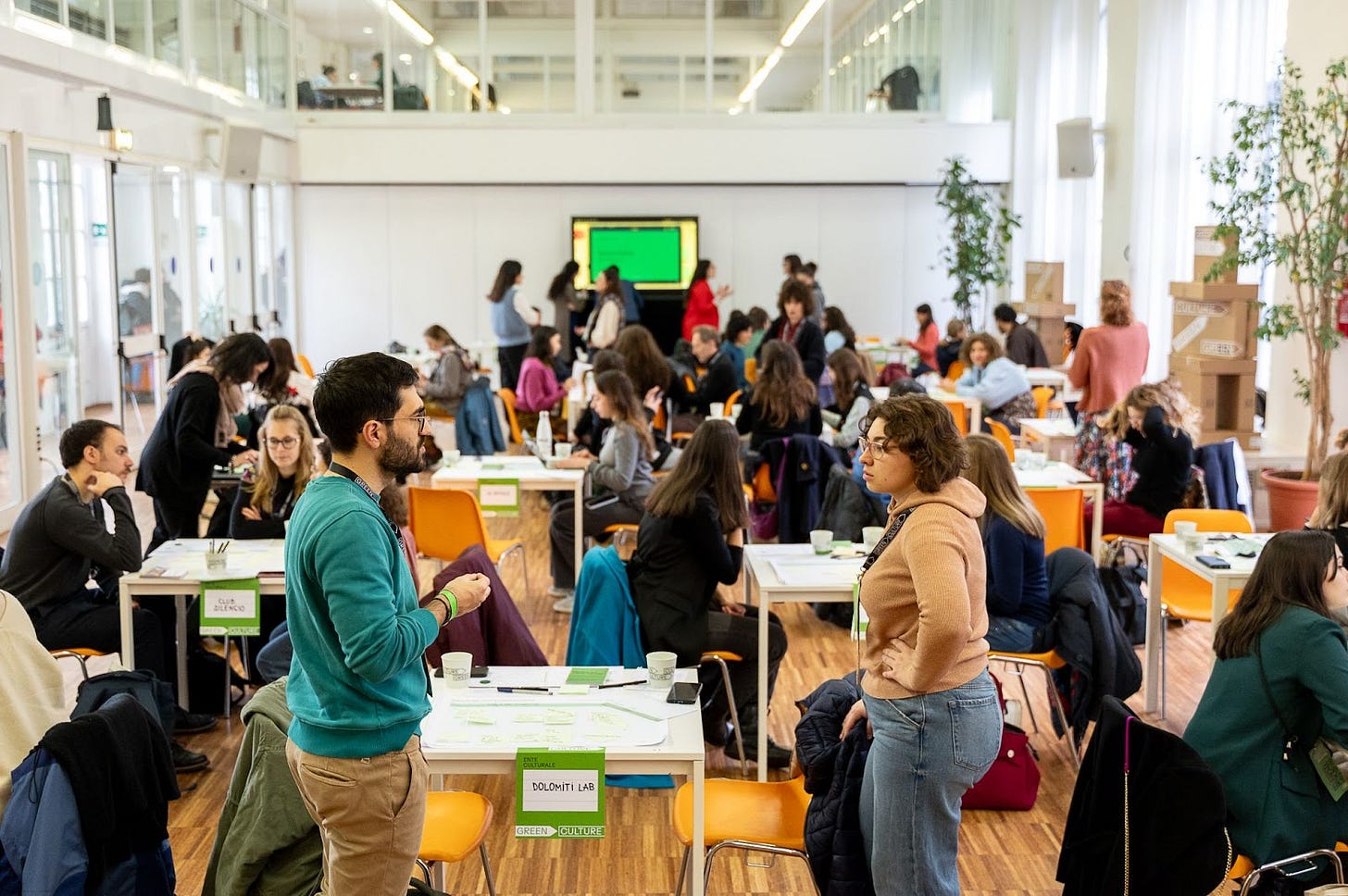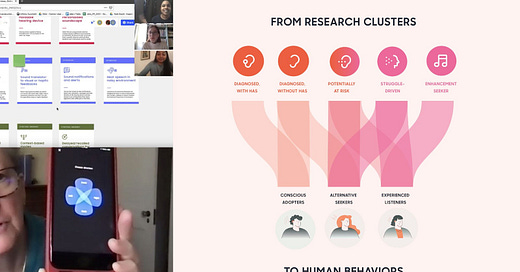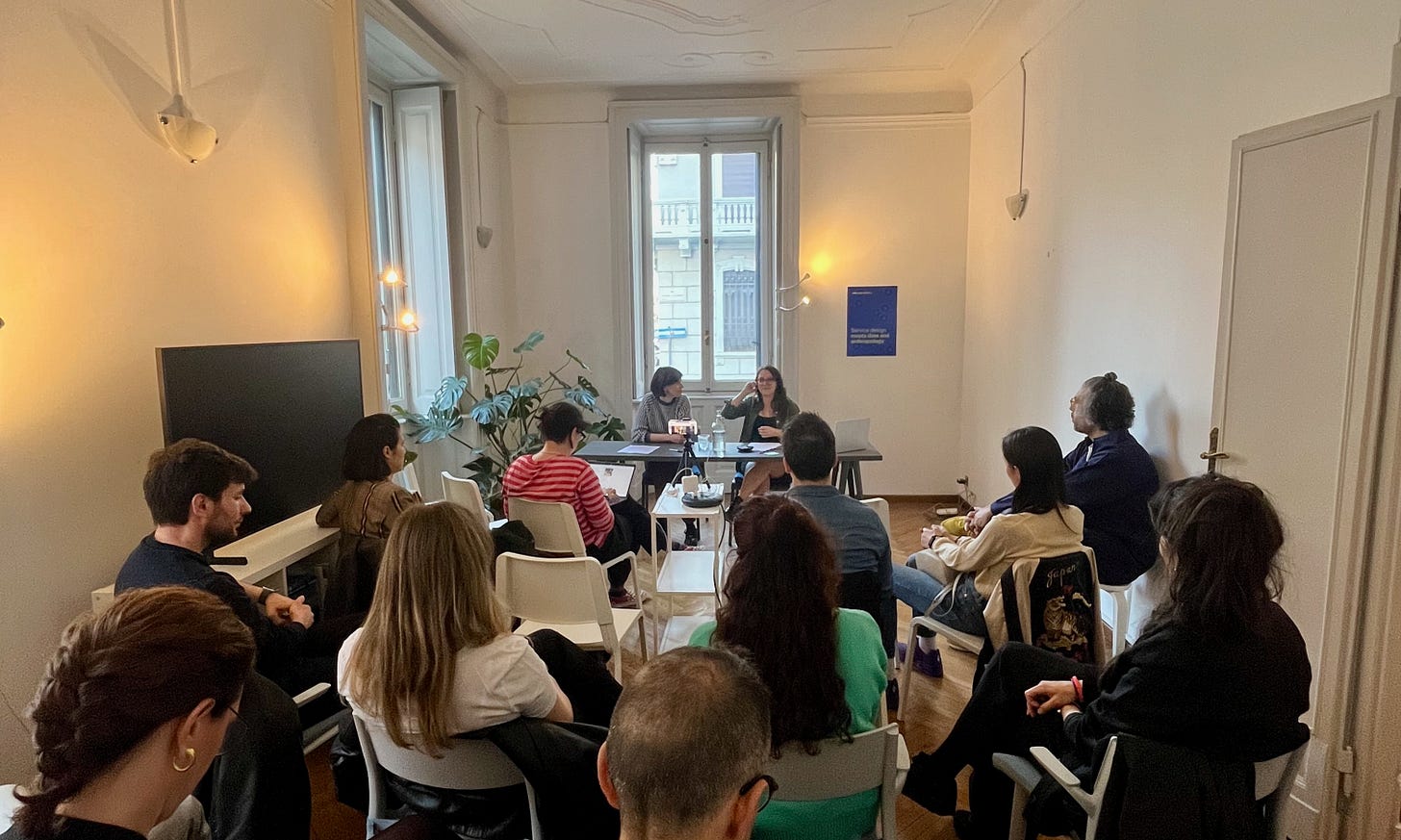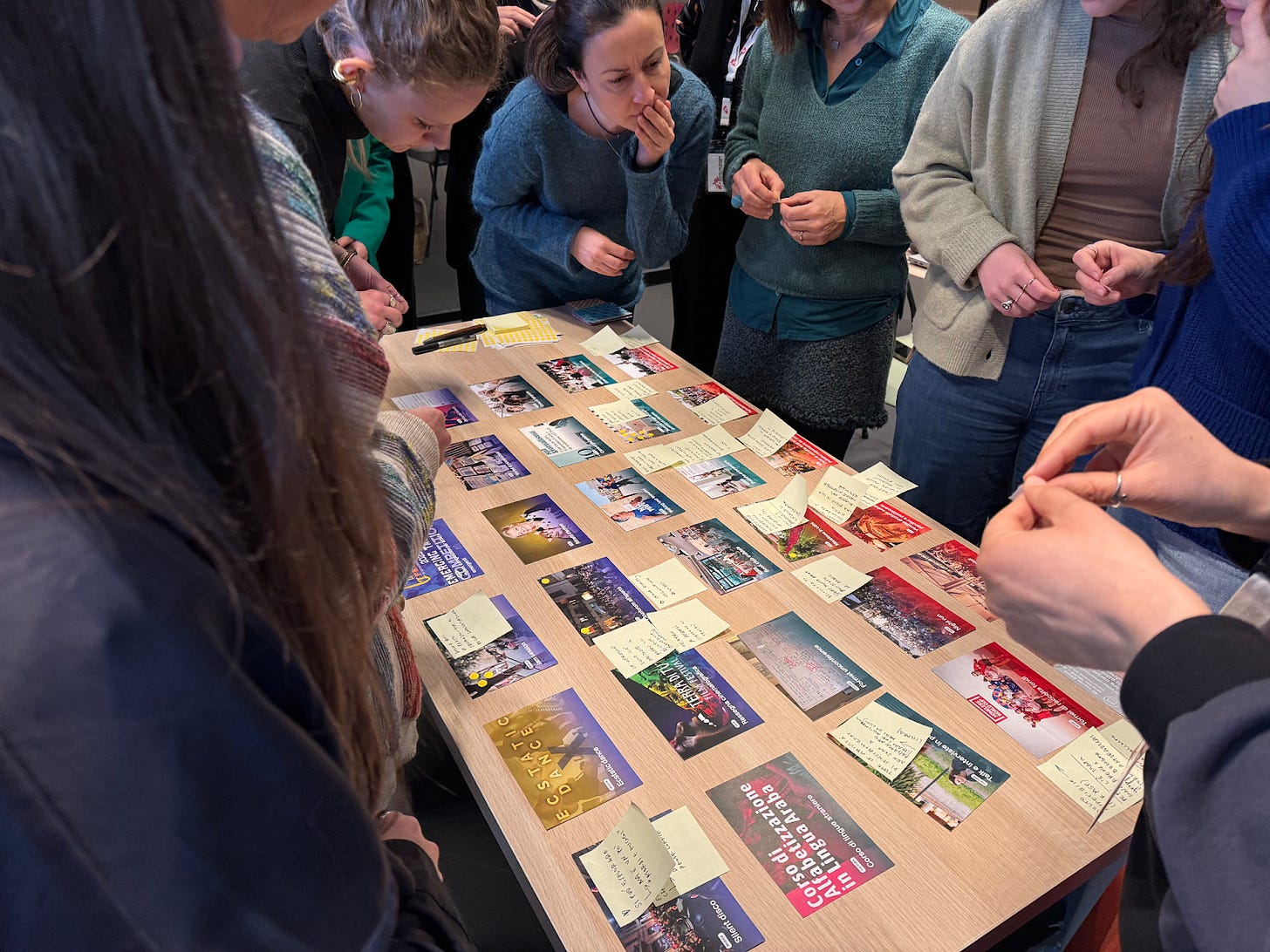Out of oblo - March 2025
Exploring the human side of data, a new case study about computational hearing, some projects and explorations around sustainable design and green transition
Dear oblo friends,
Spring has sprung, and just like nature, we’ve been taking a walk on the green side, exploring alternative and sustainable design solutions through a couple of exciting projects. With longer daylight hours, we also hosted a new edition of Service Design Meets, this time dedicated to data and anthropology, a theme that strongly resonates with our latest case study.
Ready to dive into this new edition of out of oblo?
What role could design and technology play in improving a human's hearing ability?
A new case study.
What values do people associate with hearing? What needs and coping strategies emerge when people start to experience specific sensitivities to sounds and/or mild or strong hearing loss? What role could design and technology play in improving a human's hearing ability?
In 2021 we conducted an extensive research project with mixed methods, aimed at understanding opportunities for Samsung to expand their computational hearing offer by exploring potential applications for people with hearing difficulties or hearing loss.
We engaged more than 30 people, representing a wide range of hearing abilities and needs, as well as people with specific interests in advanced hearing performance and safety (e.g. musicians). Bringing this diversity in the pool allowed to approach hearing experiences not as a challenge tied to a specific condition, but as part of a broader spectrum of needs, and ultimately identify opportunities for AI-powered solutions—such as adaptive noise canceling—that support comfort and clarity for users navigating different forms of auditory sensitivity in daily life.
Service Design Meets Data & Anthropology
Algorithms are “usually understood as autonomous objects, instead of ‘as culture’,” a quote from Giovanna Santanera’s paper Entangling Data, Entangling Disciplines.
With this quote, we kicked off the latest edition of Service Design Meets, dedicated to the intersection of data and anthropology. We invited Santanera, anthropologist specialised in digital media, data transformation processes, and migration, for a conversation with Chiara Albanesi on the challenges and opportunities of combining data science and anthropology.
Drawing from their fieldworks and projects, they discussed how anthropological thinking and ethnographic practice can deepen our understanding of how people relate to data and algorithms, highlighting their cultural and contextual dimensions. Anthropology emerged as a powerful lens to critically interpret and make sense of data, bring visibility to those who shape it, and support the development of AI-based services that are more ethical, inclusive, and transparent.
You can access the full recording of the conversation on our Youtube channel (in Italian, with automatic english cc available).
Empowering 75 organisations to plan their green transition
We have just finished a year-long project helping 75 cultural organizations in Italy to design their transition towards environmental sustainability, as part of an EU-funded project guided by Circolo del Design.
In the center of this work was a toolkit—for which we led the co-design together with Fondazione Santagata and Legambiente Piemonte e Valle d’Aosta—which brought together design thinking, environmental expertise, and a deep understanding of the cultural sector. The tools became a backbone both for the capacity building of organisations and training of Green Coordinators that were matched with them. The process unfolded from assessment of each organisation's current state to identification of opportunity areas, ideation of specific interventions, definition of projects and creation of the final roadmap.
The culmination of work was a 3-day workshop for 150 people, in which organizations and coordinators were guided by a team of almost 20 facilitators. These days required meticulous preparation regarding the agenda to synchronise working separately, onboarding of facilitators, curation of all materials, a lot of post-its, energizers, and icebreakers to keep the momentum and creativity alive throughout the event.
We are looking forward to seeing what new ideas the organizations will implement in the future and how the overall framework can help green transition in other cases.
If you’re working on a project that could benefit from a similar approach, let’s discuss it together!

Quick design sprints for sustainable event design
Professionals working in the organization of large festivals and events don’t often consider to involve service designers in the development of the concept or in the definition of a strategy for the attendees’ experience. At the same time, organizing and producing a festival could be quite complex considering the increasing need to work on the phygital dimension, and the growing pressure on sustainability.
In the past months we encountered a few requests related to this topic and put together a kit to conduct quick rounds of ideation and co-design, that could help event organizers come up with new types of formats. The workshop usually kick-off by immersing in a variety of inspirations that we collectively evaluate from different perspectives (including the possibility to communicate or engage people digitally, and the environmental footprints). This helps moving from a variety of options to a few scenarios that are all well-connected to the organization's priorities.
Once we have a more defined perimeter, we can apply a green lens to the concept development - by ideating possible solutions to further decrease the environmental impact based on a check-list of aspects such as: transport, food, materials and waste, use of energy, etc. In parallel, we outline the journey of different kinds of attendees to help structuring the production efforts.
What festivals should this be applied to?
Low-tech solutions for digital product design
Today’s digital design needs to increasingly consider environmental sustainability, often intersecting with accessibility improvements across UX, UI, content design, and front-end development.
Lately, we’ve been particularly inspired by Low-Tech Website redesigns, exploring how simple adjustments made during their websites’ redesign can improve energy efficiency. The article is from 2018, and while it’s interesting as an introduction to the topic, today’s digital landscape has radically mutated.
This shift led us to dive deeper into the current state of generative AI and its energy-intensive operations. It's still unclear exactly how much energy is required to train generative AI and other forms of artificial intelligence. What we do know is that the energy demand is substantial—especially in light of recent developments around new features by OpenAI. It’s also uncertain how much more efficient these models might become over time. For now, taking a strategic, intentional approach to these tools may be the only sensible way to use them without unnecessary waste.
We found a repository of sustainable design tools that can be used to improve an existing product or service or design a new one.
It’s all for this month, see you soon!
Anything you want to discuss with us? You can book a 30 min call or drop us a line.
Enjoy April,
Chiara and oblo team







